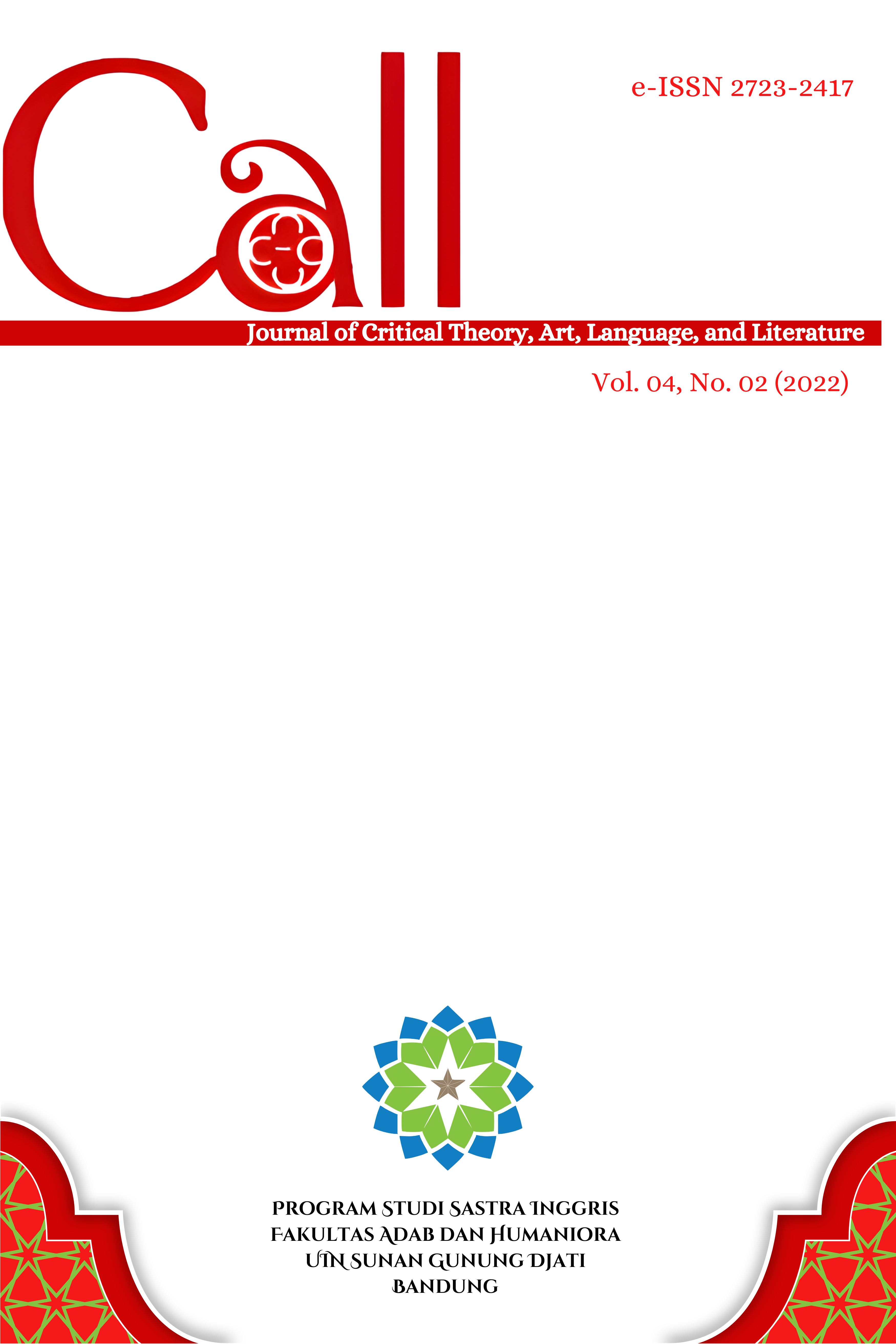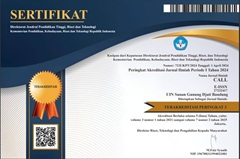SIGNS IN DAUD KIM'S STATEMENTS ON HIS YOUTUBE CHANNEL: THE CORRECTIONS OF MISTAKEN ISLAMIC UNDERSTANDING
DOI:
https://doi.org/10.15575/call.v4i2.15329Abstract
ABSTRACT
The study aimed to examine icons, indices, and symbols in Daud's speech connected to misconceptions about Islam through the semiosis method. Semiotics can be used in a variety of contexts. therefore, it is crucial to conduct study in this area to prevent misconceptions about Islam. The study has two issues: (1) the semiotic indicators in Daud Kim's vlog that are connected to misinterpretations of Islamophobic messaging (2) Daud Kim's vlog discusses misinterpreting messages about Islam's semiosis process. In order to reply to and examine the problems, Peirce's theory of triadic relation was used which illustrates the relationship between the represent, object, and interpretation in semiotics. The description of the semiosis process and how it relates to how the indicators should be interpreted were made evident in this study using the qualitative technique. The research's semiosis process: Every statement—verbal or nonverbal—began as a representamen, progressed to an object as the first point at that statement, and—from the relationship between representamen and object—became the interpretant in the end. As a consequence, the study discovered that Daud's statement can be strengthened by the semiosis process in order to avoid and clarify the mistaken message about Islam. It is possible to understand as far as feasible, the essence of the Islamic message through representation, object, and interpreter.
 Keywords: semiosis, Daud Kim, icon, index, and symbol
References
(Republika), A. N. (2021). Sebut Murid Muslim Teroris, Guru di New Jersey Diskors. Discrimination. https://www.republika.co.id/berita/r1onop366/sebut-murid-muslim-teroris-guru-di-new-jersey-diskors
Bradley, J., & Harvey, L. (2019). Creative inquiry in applied linguistics: Language, communication and the arts. Voices and Practices In, 91.
Chandler, D. (2007). Semiotics: the basics. Routledge.
CNN Indonesia. (2021). No Alasan Islam Kerap Diidentikkan dengan Teroris. Cnnindonesia.Com. https://www.cnnindonesia.com/gaya-hidup/20210503142305-284-637906/alasan-islam-kerap-diidentikkan-dengan-teroris
Rusmana, D. (2005). Tokoh dan Pemikiran Semiotik. Tazkiya Press.
Eco, U. (1979). A theory of semiotics (Vol. 217). Indiana University Press.
Kim, D. (2019). Are muslims terrorists? No! (p. 02:15). https://www.youtube.com/watch?v=V_-jxxEUN7w
Pratiwi, M. (2018). Symbol As The Way To Deliver Message In Mother! Movie. Universitas Islam Negeri Sunan Gunung Djati.
Sobur, A. (2002). Bercengkerama dengan semiotika. Mediator: Jurnal Komunikasi, 3(1), 31– 50.
Tankovska, H. (2021). Global social networks ranked by number of users 2021.
Vardani, E. N. A. (2016). Pendekatan semiotik dalam alquran surat alqiyamah. Belajar Bahasa. Jurnal Ilmiah Program Studi Pendidikan Bahasa Dan Sastra Indonesia, 1(2).
Downloads
Published
Issue
Section
Citation Check
License
Authors who publish in CALL agree to the following terms:
- Authors retain copyright and grant the journal right of first publication with the work simultaneously licensed under Attribution-ShareAlike 4.0 International (CC BY-SA 4.0) License that allows others to share the work with an acknowledgment of the work's authorship and initial publication in this journal.
- Authors are able to enter into separate, additional contractual arrangements for the non-exclusive distribution of the journal's published version of the work (e.g., post it to an institutional repository or publish it in a book), with an acknowledgment of its initial publication in this journal.
- Authors are permitted and encouraged to post their work online (e.g., in institutional repositories or on their website) prior to and during the submission process, as it can lead to productive exchanges, as well as earlier and greater citation of published work (See The Effect of Open Access).




